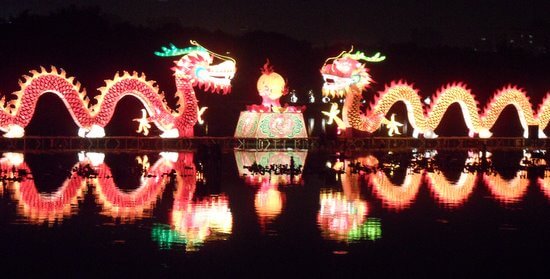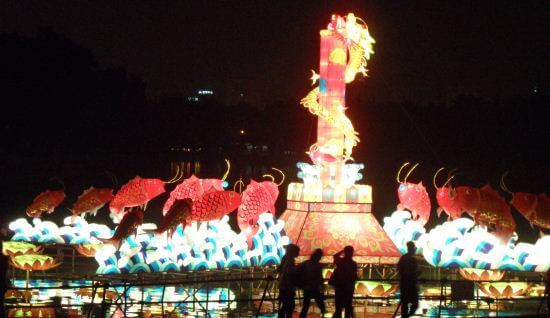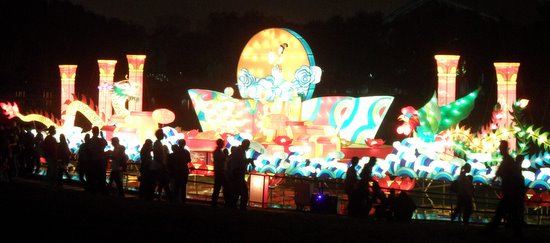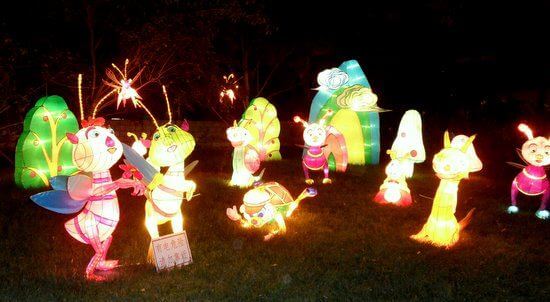
1 Mooncakes are spectacularly unhealthy, but very tasty little treats than can be savoury or more usually sweet. These are handed out to everyone, often by employers, and it’s hard to avoid eating at least a few.
Last year I didn’t appreciate quite how fatty they were, so was munching them 3 or 4 at a time like biscuits – now I’m told a single one should be sliced and shared between 3 or 4 people…
On the 15th day of the eighth month of the Chinese calendar, people all over China celebrate the Mid-Autumn Festival. The celebration takes many forms such as hanging lanterns, getting together with family, exchanging mooncakes1, dancing and matchmaking.
Traditionally lanterns were hung in trees, and had riddles attached. Children tried to solve the riddles and if successful were allowed to keep a lantern.
Today, many parks and open spaces are decorated with lantern displays of varying complexity. Most are simply decorative, but some tell mythical tales, some espouse communist ideals and some just encourage people to work harder:
Leaping Red Carp

Legend has it that on the Yellow River in Shanxi Province there are two cliffs that frame the river. The locals call this ‘The Dragons Gate’ and tell that any carp strong enough to leap the waterfall will magically be transformed into a dragon.
This story is usually simplified into a four-character proverb, “鱼跃龙门” (yúyuèlóngmén), which means, “Those who try hard will be rewarded with unimaginable benefits, regardless of how humble their origins”.
Used to encourage persistence and determination, this implies that if you work hard you stand a chance of becoming successful, and was traditionally used to inspire those undergoing the Imperial Civil Service Examinations.
Chang’e and the Moon Rabbits

Another legend told around the lunar festival is that of Chang’e. Essentially she was the wife of the legendary hero Hou Yi, an archer who shot down the nine extra suns. For this feat he was awarded a potion that would grant everlasting life to two people, but his wife drank all of it. This made her float up to the moon and lives there with the Jade Rabbit and a banished woodcutter.
Chang’e is a synonym for the moon and for poets has come to represent loneliness, chillness and solitude in her Moon Palace.
Despite his loss, Houyi ascended to the sun and also built a palace. Chang’e and Houyi came to represent the yin and yang, the Moon and the sun.
This may sound like the ramblings of a dehydrated person, but I did check, and whilst there are a number of variants the story is essentially correct.
Bees, Rainbows and a Turtle wearing a hat

Nobody knew what this was about…







Morning story. Annual #March myths in #Beijing, plus bees, rainbows and a turtle wearing a hat: http://ow.ly/6BuPC